Mildew under the shower caulk, how to prevent
I had tried so many cleaners and nothing seems to work. I have a ceramic tiled shower with a molded plastic or fiberglas floor that curves up about 3 inches to meet the tile, with a lip or shelf at this spot. The joint between the tile and the plastic floor is caulked.
I always seen to get mildew growing under the caulk. Is there any way of removing it without having to strip all the caulk off and re-do it? It's such a tedious job, and I caulked only 2 years ago. There are NO visible gaps between the caulk and the tile, no loose spots, and the gray mildew is running the whole length of it. It actually looks as if I caulked the shower with spotty gray caulk! On beige tile. I can't see how it gets in and has a chance to grow.
Before I last re-caulked, I scraped out all the old caulk, and scrubbed and bleached like mad until there was no trace of it. I literally stuffed strips of paper towel soaked in mildew killer in the cracks, in several stages, and scrubbed in between.
Then I let the shower dry for a few days to make sure there was nothing left "alive" in the gap. Then I recaulked. The mildew was back in very short order.
Does everyone have this problem??? It looks like I don't even clean the shower! I have no problem with mildew on the grout. When it starts there it comes right off with little effort. The room has good air circulation: the shower is open at the top. Is there any caulk that will not allow mildew to grow in or under it?
If I ever re-tile it will have to be with gray tile and gray grout!
Comments (49)
donnapc2
17 years agoI have the same problem. Drives me crazy - looks like I don't clean the shower, but I do alot. I will be one happy camper if I can get this resolved. Don't bother saying we need to clean the shower more . . I already do.
linnea56 (zone 5b Chicago)
Original Author17 years agoSo, only donnapc2 and I have this problem?! Everyone else has pristine unmildewed white (or almond) caulk? Or is everyone else just re-caulking every year?
Related Professionals
East Islip Kitchen & Bathroom Designers · East Peoria Kitchen & Bathroom Designers · Henderson Kitchen & Bathroom Designers · King of Prussia Kitchen & Bathroom Designers · Montrose Kitchen & Bathroom Designers · New Castle Kitchen & Bathroom Designers · Oneida Kitchen & Bathroom Designers · Piedmont Kitchen & Bathroom Designers · Southbridge Kitchen & Bathroom Designers · Kettering Kitchen & Bathroom Remodelers · Paducah Kitchen & Bathroom Remodelers · Rancho Cordova Kitchen & Bathroom Remodelers · Spokane Kitchen & Bathroom Remodelers · Superior Kitchen & Bathroom Remodelers · Turlock Kitchen & Bathroom Remodelersbmmalone
17 years agoi finally gave in and every year i recaulk the area. if anyone has the answer to this question, i think they could make a lot of money!!
groomingal
17 years agoYou guys are not alone, I have the same problem. It is disgusting and drives me nuts. I scrub the shower first and rinse really really well turn on the exhaust fan and spray the Tilex. Let that soak about 10 minutes and rinse, dry, and do it again. It will usually get rid of it for a week and then it comes back. I also recaulked and scrubbed and bleached and de mildewed several times and let everything dry well before recaulking it only took a couple of months before it was back.
foggyj
17 years agoSame here. Done all the things previously mentioned with the same results. Shouldn't have posted anything I guess, if I don't have an answer. Just wanted you all to know, you're in a big club!
Has anyone asked a plumber if they have any ideas, seeing as how they work with caulking.? Is there any with mildew fighting capabilites? I guess we would have heard about it by now though.linnea56 (zone 5b Chicago)
Original Author17 years agoI posted this on the bathrooms forum as well: Bill Vincent the tile guru came on to say that's its probably mold from behind the wall growing through. If the wrong kind of backing board is back there it will grow mold. Since I'm not going to rip out the wall, the backing, and re-tile, there's nothing I can do about that part. Last time I caulked I did use an opaque almond color caulk. I think the mildew is actually growing INSIDE the caulk, and it is not opaque enough to hide it.
I find re-caulking very grueling. It's too close to the floor and a sure recipe for back pain. I have to lay down to see what I'm doing. Plus, since the caulk is not loose, I have to scrape it out with a razor blade.
patsums
17 years agoThank you for admiting that you live with this disgusting situation. I am usually a garden forum person, but so frustrated this morning that I was hoping you had a miracle cleaning method. I have mold growing between the tiles and where the wall meets the floor, it is so gross, any help, please.
pkguy
16 years agoI just want to confirm with those of you having this problem are you absolutely positively sure you used proper bathroom caulking with the mold and mildew inhibitors in it or did you just use a bathroom caulk that didn't contain the inhibitors?
graywings123
16 years agoSomeone on the HGTV forums said they took a hypodermic needle, filled it with bleach, and injected the bleach into the caulk - or maybe it was silicone.
A soon as I can figure out how to get a hypodermic needle, I'm going to give it a shot.
linnea56 (zone 5b Chicago)
Original Author16 years agoThe ones I have used all had the inhibitors. The mold is growing under the caulk, not in it or on it.
lindac
16 years agoI had that problem....and 4 years ago I said....rip out the whole bath and replace....and the contractor who is also a neighbor and a good friend, told me after he tore it out, the insulation was wet....the wall beyind the tile was damp....somehow the water was going into/through the grout....the groput was never dry...hence mold.
After the re do....all is good.
I suspect the grout.
Linda Cmary_228
16 years agoAfter having the tile guy who installed tile in my laudry room come up and pull out the caulk and redo it, I've haven't had it recur I believe by drying the shower after use. I first squeegee it the take an old wash cloth and wipe down the tiles, then I finish up by running it along the caulk. I can see a faint line of it behind the new caulk (6 months old) but it doesn't get any bigger than that. I am scared though and keep up the maintenance whenever I can (DH won't do this).
kitchenkelly
16 years agoI just tried syringing the bleach in there experiment. (I used to give my dog allergy shots. Seriously.)
Anyway, I think it may have helped a little but I don't think it is a good idea to poke holes in the caulk?! (A little too late to have thought about that. Maybe I am on drugs.)
I think that the caulk I replaced awhile back is the issue. It said it was anti mildew but was very inexpensive. (Came in a kit with grout and tools, etc.) The reason I replaced the caulk the first time was because the previous owners did a terrible job and it looked sloppy. But at least there wasn't any mildew! So, for six years I had no mildew with the sloppy caulk and now I have mildew behind the nicely placed caulk. Hmmmmmmmm.
I think I am going to replace it again. Does anyone know of any really bathroom caulk? Bill V?
kahalalady
16 years agoI identify with all of you! I tried all kinds of things. Awhile back someone on this forum had luck using Shock It. Its a powerful chlorine used in swimming pools. I tried it and it works. Problem is the chlorine is so strong, it makes me cough. Recently, my son bought X-14 Mold & Mildew Stain Remover. Its a new product that X-14 has, and it works!!! No more mildew!! Give it a try!
cearab
16 years agoI have the same problem with mold on the chaulk. Just last week I had a handyman here replacing some broken tiles on the bathroom floor. I asked him about the mildew and he said it is all about the chaulk. The product he uses is something I have never heard of (not what I have used). To be honest, I'm not sure I used a chaulk with mildew inhibitors when I rechaulked the tub 2 years ago. But next time, I'm hiring the handyman to do it the right way. It is a very tedious job. One thing I have tried that works a bit is teh Clorox gel stick that you use on clothing stains. You squeeze out a line of the gel that has bleach in it, and it sticks onto the chaulk. I leave it on there for hours, and it seems to remove most of the mildew.
krissie55
16 years agoAfter taking a shower/bath, squeege walls and turn on a fan directed to the shower. Leave on for at least an hour or longer. This will finish drying the shower. Mold loves moisture.
I keep a fan in the bathroom just for this purpose and now do not have to scrub mildew.
geguymw
16 years ago"Mold loves moisture". This is so true. Mold also loves darkness, so the less light gets in the better, for the mold that is. I have seen many mold problems with those closed in showers. When you are finished showering, squeegee off the walls. I do this in about 10sec. Leave the shower door open. Open a window and/or use the overhead exhaust fan.
lulundave
16 years agoI too have this dirty little problem!
I have found like another poster on this thread that the CLOROX Bleach pen seems to work the best. It is a thick bleach in a pen form that clings to the caulk.
We also squeegie the shower doors, leave the exhaust fan on and most times open the window.
krn930
14 years agoI have the same problem. I tried scrubbing with Lysol 4 and 1 but it didn't help until...I forgot about it! I had scrubbed the day before with no real results. I was preparing to do battle again before work one day and forgot all about it after I had generously sprayed it all on. I remembered after I returned home and was very pleasantly surprised. The mildew was about 80-90% gone. I reapplied the Lysol the next day (the shower was dry) and saw more improvement on day two. No more scrubbing! I hope this works for you too!
alleycatdesign
14 years agoI have found a few solutions through the years. To rid the stain, I use toilet paper dipped in bleach and rolled up or squished. I form it to the size of the stain and just lightly squish it to cover the mildew spot. I leave it for few hours. When I take the toilet paper off, the mildew is gone. I also installed a new fan that actually works and I leave on a fluorescent light. I have boys, so asking them to dry the shower is a waste of breath.
eteinne
13 years agoRip out the old caulk and do the bleach routine as mentioned above. Then recaulk with Poly Seam Seal. This is not silicone. They have a website and they make many caulks. The handyman I have used for the last 20 years only uses this. All I can say is my last home, this was used and I had no problems and I was there 16 years. You can purchase it at Home Depot. Look at the website first and then ask the guys at Home Depot as they carry many.
Good luck!
mark40511
13 years agoHere is what I do. I get a big spray bottle and put a teaspoon of bleach and fill it the rest of the way with distilled water. After I'm done showering, I spray it and I see zero mildew. I scrub the shower about once a week as well. I re caulk about every 3 years.
delfonics101_gmail_com
12 years agoI heard that the cause is actually quite difficult to remedy because when tile or laminate is installed with a grooved trowel, there are voids left behind, between the ridges of adhesive. These voids, between each ridge of glue, contain air. These air pockets contain moisture. This air, containing moisture, is trapped behind the tile or laminate and when the air heats up during a shower, the air / moisture behind the shower enclosure condenses, thereby causing the moisture from the air to drip down the inside of the enclosure material until it runs into the caulking where it gets trapped and causes mildew and mold. I have had the problem of darkening caulk for 15 years and have tried everything, including bleach, x-14, etc. and the darkness (mold) always comes back. I know for a fact that the contractor used a grooved trowel when he installed my shower laminate 17 years ago and I believe there must be a way to get rid of the moisture behind the wall. Does anyone know how to do this?
mooremj5
12 years agoIt Worked! Thank you "Alleycatdesign"!
In April, 2010 you posted that you used toilet paper whetted with bleach and this worked. Our new acrylic shower is less than 2 years old and I had 7-8 black mildew stains that were apparently embedded in the caulking. The contractor had used mildew resistant caulk, but there were still some rough places that trapped moisture and caused mildewed. I had tried wetting with bleach, Clorox pen, X-14, and other mold/mildew removers. None of this worked at all. I think these liquids evaporated before they could penetrate and kill the mildew. The toilet paper holds the bleach on the caulk for an extended period giving it a chance to penetrate. I kept it wet with bleach for several hours and then left it overnight. White as snow the next morning when I washed the paper down the drain. The stains have not yet returned 2 months later. Hopefully no re-caulking for a long time. Thanks!
artsyma
11 years agoFor years I've always alternated between vinegar and bleach in my shower. We try not to over use bleach because we have septic/well. Vinegar always worked great, for many years. Our house is now 15 years old and so is the tile & grout in our bathroom, except for the caulking that hubby has replaced a couple of times over the years. About 5 years ago, it was like someone turned on a switch and the mold in the grout and caulking has been relentless. What used to be an easy fix with letting bleach soak,and a little scrub, simply foes not work anymore. About 2 years ago, I was told by a professional who removes mold from Florida homes, is that bleach actually increases mold spores! He told me to never use bleach on mold. At the time, we were also having a major issue during the winter with condensation under a bedroom window which was causing mold to grow on the wall. He told me to kill the mold with either a alcohol/water dilution or hydrogen peroxide/water dilution and spray the surface with that FIRST, let that sit for 24 hours, and then spray with a bleach/water dilution to remove the stain. That took care of the mold on the bedroom wall. We had to repeat that the following winter and foresee this as a yearly ritual here in Florida. That room gets no sunlight, and even with a dehumidifier, we still get dome mold. Anyhow, tried the same technique on the shower and it worked as well. However, I'm afraid that all the years of using all that bleach probably made the problem worse deep inside the wall. The mold stains are permanent in the caulking and we are planning on ripping tile out and checking the wall and will most likely need to replace. I will NOT be using bleach as a mold killer from now on. Will only use bleach AFTER the mold has been killed first.
livininin
11 years agoAhhh, I'm not the only one. It's a disgusting problem and it drives me nuts! I have read that bleach does not cure the problem at all because it doesn't kill the spores. It only whitens them. You need to kill the spores first with Borax or something else then bleach the stain. Good luck!
livininin
11 years agoAhhh, I'm not the only one. It's a disgusting problem and it drives me nuts! I have read that bleach does not cure the problem at all because it doesn't kill the spores. It only whitens them. You need to kill the spores first with Borax or something else then bleach the stain. Good luck!
krissie55
11 years agoI read recently mildew resistant caulk is available.
Keeping a fan on for a few hours has eliminated mildew problem for me.
janikawa
11 years agoI have cleaned houses for years. If you re -caulk just make sure to get the silcone caulk and not the latex caulk. Make sure to clean it really well with bleach before you re-caulk. Also you might want to get a sealer and seal the caulk and grout , saves alot of time!. The mold is very hard to get out of caulk. There are alot of different methods for cleaning it. Bleach for white caulk. Tea tree oil also kills mold, for those who want a natural approach.
maks_2000
11 years agoAny thoughts when the mold is on Travertine??? I've been told not to use Clorine Bleach on a natural stone, but I'm not sure about hydrogent peroxide or Borax -- Tide or Clorox 2 makes a Non-clorine bleach pen . . . I'm also glad to hear about the tea tree oil. My problem is between my silicon caulk & glass. The glass installers said it was 32 year silicon -- not sure what that meant, but it only took 4 years for it to look cruddy . . . and now the mildew drips to the grout, thus I'm sweating it & trying to get squeaky clean before my next sealing.:(
I have found a product at Home Depot, "Daily Stone Cleaner" that gets light stains & soap scum off travertine. It also works great with water spots on the shower glass. Thanks if anyone has any input.
james758
11 years agoThe following worked well for me. Spray X-14 Mildew Stain Remover with Bleach (made by WD-40 company) directly on the mildew under the caulk. Leave the bleach on the stain over night (do not flush it away with water as one user suggested in another blog). Re-treat the area every day or two, for about 2 weeks. Over this time period, you will see the mildew slowly fade away. Also leave the shower door open most of the time to dry out the shower. Keep pets away from the area. Once every few weeks I treat the area once again to keep the mildew away.
linnea56 (zone 5b Chicago)
Original Author11 years agoThe X 14, which I just found about 2 weeks ago, works better than anything I have so far tried. I did the toilet paper and bleach thing many times. It worked, but what a chore! This is so much easier! Thanks!
Tmnca
11 years agoI have had this issue in the past - in a rental apartment. It was definitely the wrong caulk but I wasn't going to re-do it. I used a Clorox Bleach Pen. It's a gel, so you can apply it right to the target area and it will stick and do it's job. Liquid bleach just runs off. It worked! I had to re-do that every few months.
Normally I do not like to use chemicals or harsh cleaners, but sometimes you need the bleach!
This post was edited by tinan on Thu, Dec 6, 12 at 0:57
jannie
11 years agoI find running the bathroom fan after a shower helps a lot. My town has an ordinance requiring a bathroom fan in new construction or in remodelling, in order to get a Certificate of Occupancy. After Hurricane Sandy, we had very little trouble. We didn't flood and we lost electricity only 22 hours. But I heard and read many DIY and contractors say bleach is no good, only vinegar kills mold and keeps it away.And I'm very dubious about using other chemicals in my home. Just my 2 cents.
pkspigs
11 years agoYour only PERMENANT is to find where the water is geting behnd your calk and fix it, spray is only temp. find the leak, you will have to tear out the walls, depends on how bad youwant itr eally fixed
Annalee Ogle
8 years agolast modified: 8 years ago17 years ago I installed a shower tub in my home. I have never had to re-caulk it once. It was a two piece unit. I used green board. I followed the manufacturers guidelines. I used an inexpensive bathroom caulk and followed the guide lines. The home has been used as a rental for 15 years. Lots of large families. I think the reason for it lasting so long is because I spent extra amount of time making the transition from the wall to the tub as smooth, and as concave as possible not using tape, but by holding my finger directly behind the tip as I moved along. By shaping it in this way, the water couldn't sit on a ledge and allow for mold to grow easily. If there is no mold, the less chemicals are used to clean it. the less chemicals, the longer it will last. I have been a journeyman carpenter for 21 years. I have worked with concrete and grout a lot. All concrete is porous. Grout is porous. The grout caulk is not waterproof. The grout is not water proof. If you neglect applying a sealer to these two things you will have mold problems every time. If you put drywall up around any surface where water is going to intermittently come into contact try to keep the drywall off the horizontal surface by at least a quarter inch. Fill the void with caulk. this way water is not ever allowed to touch paper. The tile or the base board will cover the void. If there is ever any standing water, mold will not get a foothold.
Patricia Kuehne
8 years agoAll the mildew killing stuff you are using is just temp. So is the kind of caulk. The ONLY way to perm. fix this problem, is to find out where the moisture is coming from BEHIND the tiles and fix that. Eventually you will have a total tile failure if you don't fix the wet issue.
wf626
7 years agoI find that when you use regular painters caulk like Alex's acrylic, that tends to mold easier and is harder to clean. I use silicone which repels mold better and lasts longer than painters caulk. The only down side is its 3 to 4x the cost.
David Marco
6 years agoWell I have the same problem. Every 4 months or so I have mold under the caulking in my shower in only one spot. It keeps returning in that exact same spot only and has been driving me nuts. I finally realized that the shower nozzle was pointing directly to that spot so I moved it. I also thought that perhaps the grout the builder used was not sealed. So I changed the caulking once again and then sealed the grout all around that area. I sealed the grout on both the shower floor and wall. I don't believe I have mold behind the wall. I'm also using the exhaust fan more often and leaving the shower door wide open afterwards so the water and humidity disappear faster. I'm hoping this will be the end.
TERSO MR®
6 years agoHello Folks, visit our website www.tersomr.com, find the permanent solutions to shower grout problems.Lane Design/Build Inc
5 years agoRobert in CS.
Hi everyone. The one piece fiberglass shower base with a shoulder or curb that the wall tile comes down on typically has a 1-1/2” nailing flange for attaching the shower base to wall studs. The tile backer board is installed to cover over the flange but small gap should remain. The tile is also installed with a small gap at the bottom. This gap does not get caulked or grouted. Your tile backer board is a drainage plain that will allow any water or moisture that gets past the tile to migrate down the wall to the curb where it exits into the shower floor. If your silicone grout has black mold behind it, it’s from water that Is trapped behind the caulk. Check for missing, cracked or loose grout. Regrout and remove silicone caulk. If you have a large gap, sorry, lousy install.
Eduardo Flores
4 years agohttps://www.youtube.com/watch?v=9-5qzAxHtm4&t=174s
think it may be what this guy describes in this video @ 3:31 inHU-718091807
3 years agoI’ve had the same issue of mold growing along the bottom horizontal frame of my shower door frame. The upright vertical frame pieces will rarely get spots of mold “under” the thinner areas of caulk (ie. Toward the edges, not in the thicker transition/corner portion of the caulk line). This drove me crazy as the bottom would mold so much faster. Well, obviously it stays wetter, but what makes it mold sooo much more & faster is that there is mold that has penetrated through AND under the caulk and is actually inside the horizontal rail of door frame. Bleaching NEVER really rids the area of mold under this bottom portion of the frame. Even without caulk, theres only a slight crack between the frame and fiberglass tub. I’ve removed caulk from the inside & outside and squirted bleach cleaner under there from both sides as best I could multiple days in a row then recaulked and still mold would grow.
THE MOLD IS COMING FROM INSIDE THE RAIL/FRAME/WALL/TILE (whatever) and working it’s way OUT. It’s possible even condensation may be enough moisture for mold. If I figure out a way to ensure not making a mess, I may spray some foam under the frame to see if that stops it.
maks_2000
3 years agoI’ve found a 60/40 or 50/50 mixture of water to Hydrogen Peroxide best KILLS molds & mildew, & a similar mixture of chlorine bleach best rids the stain caused by them. You may need to use a soft brush with both processes. Only leave on about 10 minutes & ALWAYS RINSE WELL.
If there is caulking involved, at some point, it will need to be remove, cleaned well, allow the space to dry completely, then re-caulk.
Over the years I’ve read that some folks will spray the shower area - or problem area - at least once a week with the hydrogen peroxide solution to manage the situation. (Don’t forget to rinse.) Good luck 🍀HU-409054185
3 years agoI had the same problem but found out how to solve it. No caulk. My shower is a synthetic vanity like material Corian or something like that so I have four monolithic slabs to form the walls and one slab on the floor. I used adhesive copper strips similar to what is used by people making stained glass instead of caulk.. the copper is toxic to the mold and nothing grows on it plus for about three or four inches away from the copper no mold will grow either. Galvanized metal or pure tin or pure zinc will also work as well but you can't find them in self-adhesive foil tape. I've been using this for a year now and have seen no indication of mold.
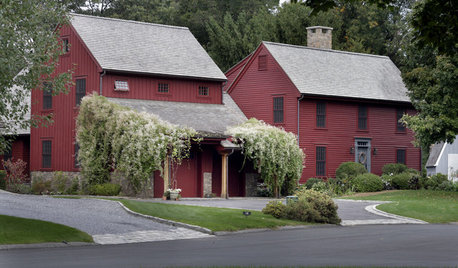
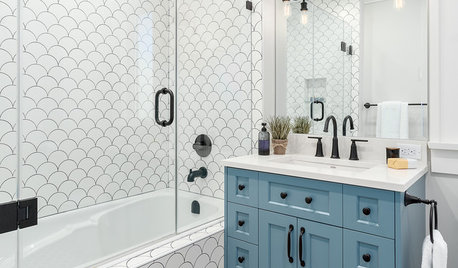
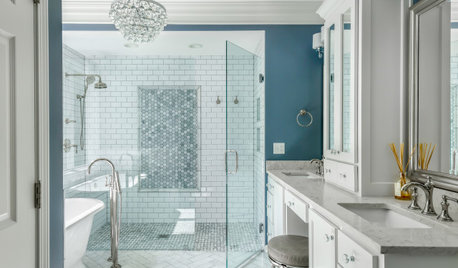
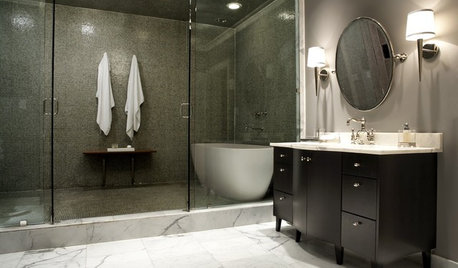
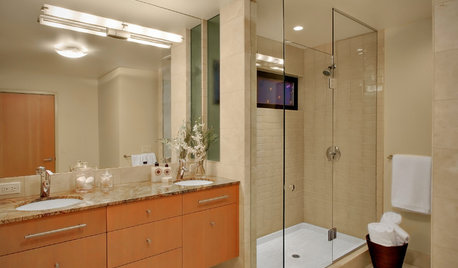
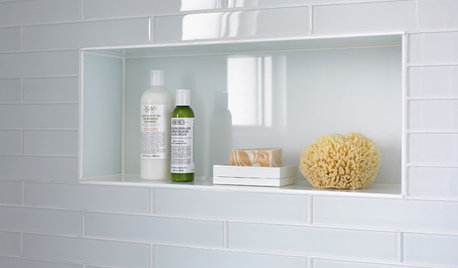
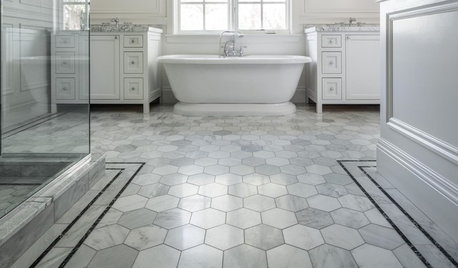
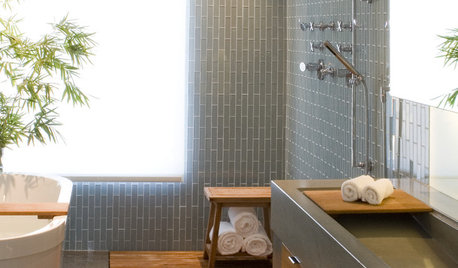
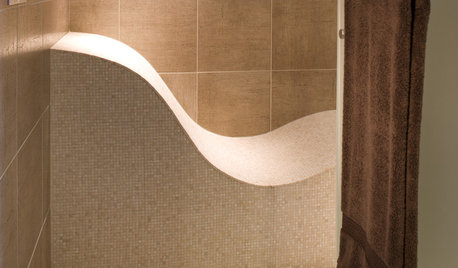
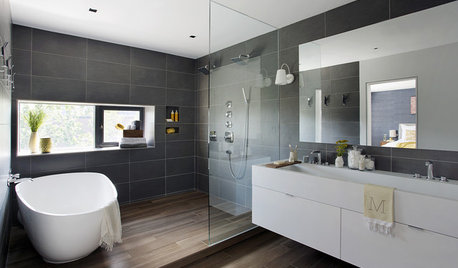








linnea56 (zone 5b Chicago)Original Author